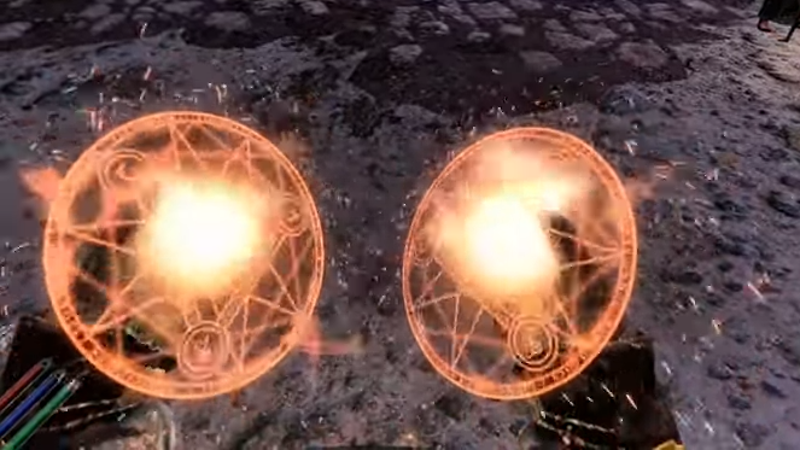"Aloha everyone, I wanted to connect a few new dots for us and even cover a method to decalcify our pineal glands. All to help with neurological disorders like Alzheimer’s and more.
#Brainwaves….most of you are aware of a few but I have come across a few new ones. Keep in mind that lower frequencies have higher amplitude. This is what it means to increase your vibration.
#Delta - approximately 0.5-4HZ (cycles per second) which is usually associated with deep sleep. Less dreaming means lower HZ.
#Theta - approximately 4-8HZ. This is when we are day dreaming or in meditation.
#Alpha - approximately 8-12HZ. This is when we are awake and relaxed
#Beta - approximately 12-30 HZ. This is when we are awake and thinking.
{Monks in #Tibet showed researchers a new state which is even higher than that}
#Gamma - approximately 30-44HZ. This is achieved with Deep focus.
Under laboratory conditions monks achieved two new states.
#HyperGamma - approximately 44-100 HZ. This is a far deeper focus than Gamma
Seeing how excited the researcher were about this the monks showed them they could go even further.
#Lambda - approximately 100-200HZ. At this point, both of our brain hemispheres synchronize.
This really got me excited because I have gone through the Monroe Institute Gateway Experience for brain hemisphere synchronization years ago and still use them daily. Helping others as a Monroe Community Guide for all interested and all for free.
This also explains why my meditation went to the next level and beyond after only using this method for 1 week. My mother and a few others close to me could see a big difference in me too. They asked if I was doing drugs? As it turns out though, our brains do make #DMT, #seratonin, #melatonin and more.
If this sounds interesting to you, I have a thread here covering the Gateway Experience and I’m helping people in person here on the Big Island of Hawai’i.
There was one last brain state discovered in lab testing at the other end of the spectrum.
#Epsilon - approximately starting at 0.5 Hz going down to 0 (zero). Honestly, I don’t have my own words to describe how & when this is achieved. However, the researchers describe this as nothing being emitted from the brain. A state of suspended animation. No heartbeat. No pulse. No breathing. Yet, very much alive & conscious.
Now, referring back to the original post about Alzheimer’s and other neurological disorders. These occur when our brains become calcified. There is a build up of plaques called beta amyloids. Thereby adding massive “resistance” (Ohms) to our bodies communication. This is why you see porcelain insulators on power lines. They DO NOT CONDUCT.
In one experiment with mice, researchers genetically modified their neurons to respond to light. After which, mice were pulsed with light flashes in Gamma frequency 1 hour per day for one week. After which, those mice had 1/2 as many plaques in the visual cortex compared to the control group. This showed that Gamma activity boosts immune cells “gobbling up” plaques changing how the proteins (beta amyloids) are processed leading to less plaque and far more conductive neurons.
This got me thinking about our pineal glands. For some reason, they have color receptors the same as our eyes but they are in the middle of our brains literally never seeing the light of day. Hmmmm…..why would that be?
Well, there was a researcher by the name of Dr. Jacobo Grynberg-Zyllerbaum who got to spend some time in Mexico with Shamans and came back with an idea.
The experiment happened like this. Two meditators were connected to electroencephalograph (EEG) machines to measure brainwaves. These two meditators brainwaves became synchronized while in the same room. After a while, one meditator was moved to a different room completely shielded from ambient EMF and still synchronized with the other meditator.
Researchers began to hit the 1st guy with pulses of light. Though he was in deep meditation, those flashes were causing spikes in his brainwaves. What do you think happened to the other guy’s brainwaves down the hall?
The exact same spikes were showing up on his EEG machine without being hit by these pulses of light…
This shows that our brains & neurons respond to light without the genetic modification. And, pulses in the Gamma frequency range decalcifies our brains improving how our brains work with better internal communication due to a lack of resistance. Beyond that, we are quantum & all connected. Sensing and experiencing what someone else is experiencing.
With all of the cyborg brain interface stuff happening now showed us that chimpanzees can control a dot on a monitor like the Pong game with only their thoughts. The idea was initially they had a joystick to control this dot on a screen and anytime they got this dot inside of a moving circle, they received a drop of juice. After a while, the joystick was removed and eventually the chimps began moving the dot with their brains…what are humans capable of?
All of this food for thought has me wondering how we can create these pulses of light in Gamma frequencies for healing others and ourselves. I would love for all of our brains be put to the task for the betterment of all. Right now, I’m thinking of using an oscilloscope and connecting it to a light source but I’m sure some of you have far better ideas.
Lastly, I encourage all of you to get involved with my brain hemisphere synchronization, worldwide group meditations and distant energy sessions. Helping our minds connect and communicate with the Field that we are, not in. I do this just to hone my own skills but more of us that work together we begin to amplify our efforts. All for free and nothing to sign up for. No set schedule & no obligation."



